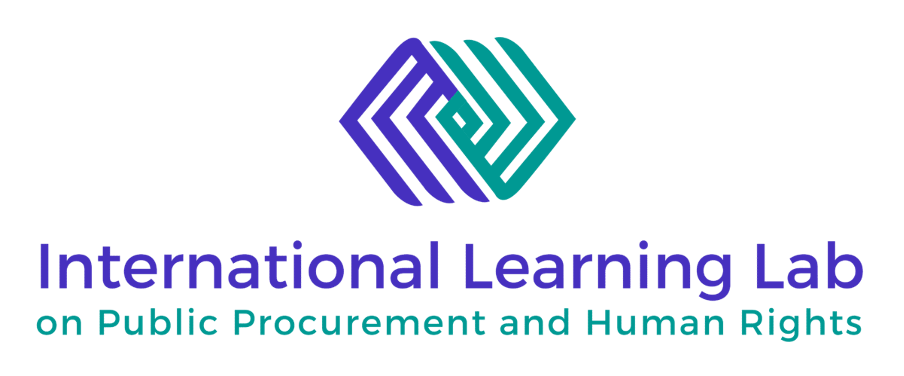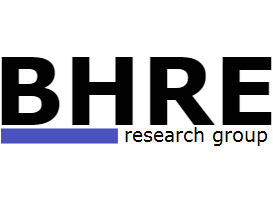DRIVING SOCIAL VALUE THROUGH PUBLIC PROCUREMENT – SCOTLAND’S SUSTAINABLE PROCUREMENT DUTY - Nikki Archer, November 2019
In Scotland, public procurement of goods, works and services accounts for more than £11 billion a year, which constitutes a significant part of the Scottish economy. Consequently, the Scottish Government recognises that public procurement can be used as a lever to achieve inclusive and sustainable economic growth. They are seeking to ensure that public money is not only spent in a more efficient way, but also helps to deliver wider social, economic and environmental outcomes aligned with their wider aims and ambitions.
A holistic approach: Scotland’s National Performance Framework
At the heart of Scotland’s legislation is the National Performance Framework, a holistic framework for all of Scotland. It is composed of three central elements. Firstly, the overall purpose to create a more successful country by promoting sustainable and inclusive growth. Secondly, the national values that guide the Scottish approach. And thirdly, the envisaged national outcomes describing more specifically the kind of Scotland the framework aims to achieve. In addition, national indicators help to track and measure the progress against each of the eleven national outcomes.
Figure 1: The National Performance Framework, Source: Scottish Government
The national outcomes are aligned with the United Nations Sustainable Development Goals, and make explicit reference to human rights: “We respect, protect and fulfil human rights and live free from discrimination”.
In order to achieve these national outcomes, it is essential that national and local government, businesses, voluntary organisations and people living in Scotland engage and collaborate with each other. One key measure to help reach the overarching goal outlined in the National Performance Framework is public service reform, including the improvement of public procurement practices.
Scotland’s Sustainable Procurement Duty
With a collaborative purpose and vision, the Public Procurement Reform Programme 2006-2016 drove significant changes in public procurement, culminating in the Procurement Reform (Scotland) Act 2014 that outlines Scotland’s sustainable procurement duty. In this context, it is noteworthy that Scotland took a leading role in promoting and delivering the potential positive impacts of public procurement practices, even before the 2014 EU Procurement Directives.[1]
The sustainable procurement duty requires all public bodies to consider how they can drive social value through their procurement practices. These practices should not only aim to spend public money more efficiently, but also to improve the social, environmental and economic wellbeing of the authority’s area. Moreover, a particular focus must be set on reducing inequality. Therefore, public bodies must also take into account how they can involve SMEs, third sector bodies and supported businesses; promote fair work matters; help spur innovation; and deliver other equality outcomes that benefit our communities. Figure 2 visualises the Scottish approach to public procurement by highlighting the interplay between quality, cost and sustainability.
Figure 2 Scottish Model of Procurement, Source: Scottish Government
To ensure compliance with the sustainable procurement duty and a contribution to the overall purpose set out in the National Performance Framework, any authority with an estimated annual regulated spend of £5 million or more (excluding VAT), has the obligation to develop, publish and annually review a procurement strategy. This document must clearly state how the contracting authority plans to comply with the duty and how it is contributing to the overall goal. In addition, the progress against the formulated strategy must be published in an annual procurement report. The main objectives of publishing the procurement strategies as well as the procurement reports are to facilitate strategic planning, increase transparency and provide a basis for engagement.
Guidance and Support provided by the Scottish Government
The Scottish Ministers have published a suite of Statutory Guidance under the Procurement Reform (Scotland) Act 2014 to help public bodies comply with the act and its obligations. More specifically, these documents include guidance on, for instance, procurement strategies and annual reports, the sustainable procurement duty, community benefit, selection of tenderers and award of contracts. The statutory guidance has been developed based on public consultations and feedback from stakeholders.
Furthermore, the Scottish Government produced a range of sustainable procurement guidance available to all public bodies to facilitate the integration of sustainability issues into their procurement practices. These address issues such as climate change, biodiversity, heritage, communities, fair work practices and equality in the procurement context.
In terms of the respect and promotion of human rights in procurement, the following guidance can be highlighted:
· The Statutory Guidance on Addressing Fair Work Practices, including the Living Wage, in Procurement aims to help public authorities address Fair Work practices in their procurement processes. Service quality levels are often critically dependent on the quality and engagement of the workforce through Fair Work practices. The delivery of high quality services can impact on users of public services and can help create a fairer, more equal society. Therefore, aspects such as fair pay, training and skills development and a good relationship between employer and workforce should be taken into account. In this regard, the Scottish Government considers that the payment of the real Living Wage serves as an significant indicator of an employer’s commitment to Fair Work practices and there is an active drive to encourage suppliers to sign up to Living Wage accreditation. Best Practice Guidance and a Toolkit is available to support addressing Fair Work in procurement.
· Fair and ethical trade – sustainable procurement guidance on conflict minerals and worker conditions: These documents intend to make public authorities question under which conditions the purchased goods are produced. Central questions are for instance “Are there any concerns regarding minerals used in the manufacturing of goods or equipment that may be mined in conflict-affected or high risk countries/areas?”or “Are there potential concerns about human rights and worker conditions/exploitation anywhere within the supply chain?”. Besides the assessment of possible risks, public bodies should also consider their opportunities to drive social value.
· Guidance on procurements where equality is of relevance: Reducing inequality is one of the main objectives for Scotland. Consequently, buyers not only consider discrimination, harassment, victimisation or other unlawful conduct towards people with protected characteristics when procuring public goods, works and services. They are encouraged to seek out ways to deliver positive equality outcomes in their supply chains, including jobs, apprenticeships and training for protected characteristics and other community benefits.
In addition to these guidance, a range of tools and supports are provided to further facilitate compliance and best practice for both buyers and suppliers. For instance, the Procurement Journey website launched by the Scottish Government, guides public procurement staff step by step through the procurement process and offers decision making tools such as the Decision Matrix or different Procurement Journey Routes. Moreover, e-commerce solutions make it possible to automate and streamline business activities.
Enhancing Skills and Competency
Another important aspect of the Scottish approach to public procurement is to attract, develop and retain talent, ensuring a high standard of skills and competency of public sector staff responsible for public purchases. For this reason, a national procurement development framework has been developed, an online accessible tool which allows public sector staff to self-assess their skills, identify needs for training and help to plan their career and personal development from entry level through to senior leadership.
Partnerships with the public and private sector as well as with educational institutions have been created to promote public procurement as an attractive career path. The Procurement People of Tomorrow programme (PPoT) is an initiative aiming to professionalise public procurement and fill the existing skill gaps by attracting new talented people. Derek MacKay, Cabinet Secretary for Finance, Economy and Fair Work, presents the overall goal of the PPoT:
Blog about Public Procurement
For further information, news and updates, the Scottish Government administers a blog about public procurement in Scotland. It targets not only professionals and (potential) suppliers, but also the general public interested in learning more about sustainable public procurement and its potential to deliver positive outcomes that are good for business and employees, good for society, and good for place and community.
[1] For further information about the 2014 EU Procurement Directives, the following blog posts, previously published on the Learning Lab Blog, can be recommended:
EU procurement rules allow taking human rights into consideration at every phase of the cycle. But how hard is it to do so, and how effective can it be? by Albert Sánchez-Graells.
Modern Slavery: Do the 2014 EU Procurement Directives Establish New Routes to Remedy for Victims? by Eamonn Conlon.

